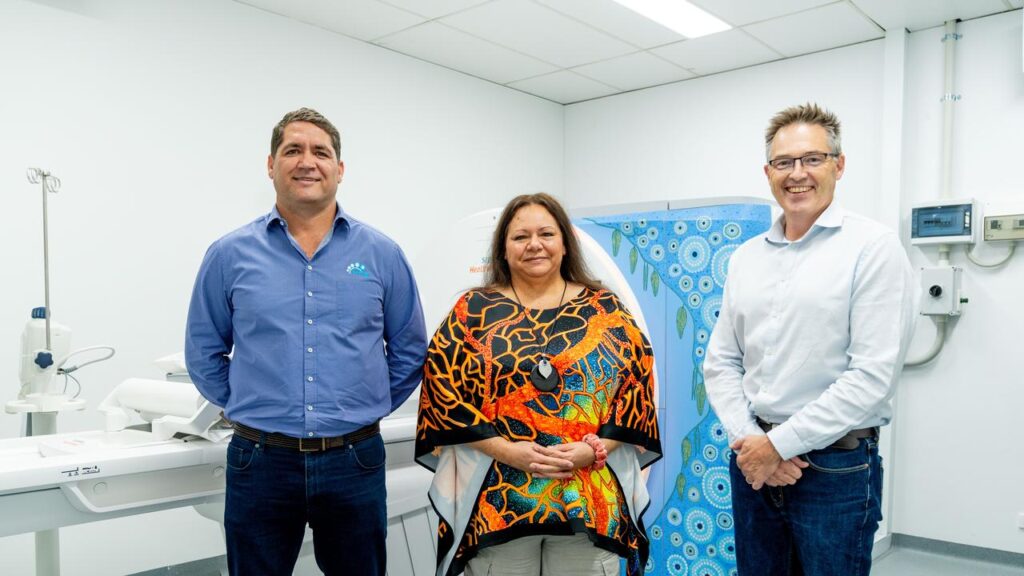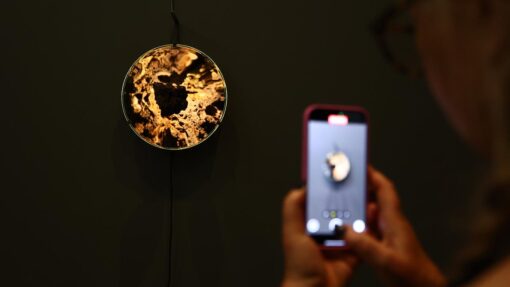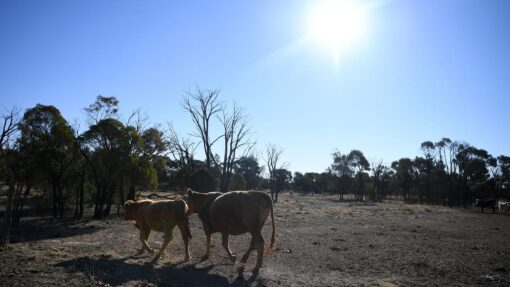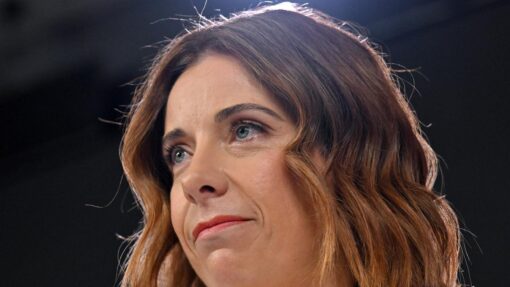Healing art: medical scans get a cultural makeover
Keira Jenkins |

Having to travel hundreds of kilometres for medical care is a common occurrence in many of Australia’s regional and remote regions.
But in the WA gold-mining town of Kalgoorlie, an Indigenous co-owned medical imaging business is on a mission to bring world-class scans to the community in a culturally safe way.
That’s where local Wongai and Mirning artist Carol Thompson comes in, armed with her painting supplies and a desire to alleviate some of the anxiety around having a medical procedure that her community might have.
The result is a newly-installed CT scanner adorned with her work, which features the local bush banana vines and her interpretation of cells, symbolising healing, growth and culture.
Hand-painting the artwork onto the huge piece of medical equipment was no easy feat, but Thompson hopes the artwork contributes to a sense of safety and ease at the clinic.
“It could be a daunting thing – getting the scans done – if (the artwork) can help them make them feel more relaxed, then my job is done,'” she said.

A sense of cultural safety is important to the co-directors of Spartan First Imaging, Des Headland and Peter Tually, whose story of being in business together started with a conversation at an AFL match.
After speaking about his business and ambition to work more closely with the local Indigenous community, Mr Tually, a nuclear medicine practitioner, was introduced to Mr Headland, a former AFL player and chief executive of Spartan First.
“Before I could say let me think about it, we’d set up what we believe is the world’s first private Indigenous medical-imaging business,” Mr Tually said.
Mr Headland said he liked to dream big about the impact it could have.
“It feels like just yesterday we sat down with Pete and created the business, it’s been over 12 months in the works and we’re finally here,” he said.
“Good things come when you wait and we’ve definitely waited for this to get this state-of-the-art CT scanner in town.”

The scanner will provide services not previously possible in the region, like imaging of coronary arteries, which means locals won’t have to make the 600-kilometre trip to Perth and will help reduce time to diagnosis.
The machine also runs on a battery with sustainability in mind, but one of its most important features for the co-directors remains Thompson’s artwork.
“For many of our patients, especially those from Indigenous backgrounds, clinical environments can feel cold and unfamiliar and have historically been associated with illness rather than healing,” Mr Headland said.
“We have incorporated contemporary Aboriginal artwork painted directly onto the scanner – we’ve created a space that feels safe, welcoming and grounded in culture.”
AAP


